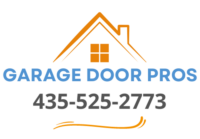When was the last time you thought about your garage door’s health? For many homeowners, this crucial part of the home often goes unnoticed until something goes wrong. Regular garage door inspections are vital not only for maintaining the door’s reliability but also for ensuring your family’s safety.
By focusing on annual garage door tune-ups and preventive measures, you can significantly extend the lifespan of your garage door and avoid costly repairs.
In this article, we’ll delve into the essential components that need attention, from springs to safety features, and weigh the benefits of professional garage door repairs against DIY maintenance.
Importance of Regular Inspections
Regular garage door inspections are crucial for maintaining your home’s functionality and safety. Let’s explore how these inspections can prolong your garage door’s lifespan and enhance safety.
Prolonging Garage Door Lifespan
Regular maintenance is key to extending the life of your garage door. By catching minor issues early, you can prevent them from becoming major problems.
Annual tune-ups can identify wear and tear on components like springs, cables, and rollers. Addressing these issues promptly can prevent costly repairs later on.
Lubrication of moving parts during inspections reduces friction, minimizing wear and extending the life of your garage door system. This simple step can make a significant difference in the long run.
Enhancing Garage Door Safety
Safety should always be a top priority when it comes to garage doors. Regular inspections are crucial in maintaining a safe environment for your family.
During inspections, technicians can check and adjust safety features like auto-reverse mechanisms and photo-eye sensors. These features prevent the door from closing on objects or people, reducing the risk of accidents.
Inspections also ensure that all parts are secure and functioning correctly, minimizing the risk of sudden failures that could lead to injuries. Don’t underestimate the importance of these safety checks.
Key Components for Inspection
Certain components require special attention when conducting a garage door inspection. Let’s focus on the critical areas that need a thorough examination.
Focus on Springs and Rollers
Springs and rollers are the workhorses of your garage door system. They bear the brunt of the door’s weight and movement, making them prone to wear and tear.
Torsion springs, which counterbalance the door’s weight, should be checked for signs of wear or damage. A broken spring can cause the door to fall suddenly, posing a significant safety risk.
Rollers guide the door along the tracks and should move smoothly. Damaged or worn rollers can cause the door to operate noisily or unevenly. Regular lubrication and replacement when necessary can keep your door running smoothly.
Essential Safety Features
Modern garage doors come equipped with several safety features that require regular inspection to ensure they’re functioning correctly.
The auto-reverse mechanism is a critical safety feature that prevents the door from closing on objects or people. This should be tested regularly by placing an object in the door’s path as it closes.
Photo eye sensors, typically located near the bottom of the door frame, detect obstacles and prevent the door from closing when something is in its path. These sensors should be cleaned and aligned during inspections.
Professional vs. DIY Maintenance
While homeowners can do some maintenance tasks, others require professional expertise. Let’s explore the benefits of professional repair and some DIY tips for garage door upkeep.
Benefits of Professional Repair
Professional garage door technicians bring expertise and specialized tools to the job, ensuring a thorough inspection and proper repairs.
They can identify potential issues that might not be apparent to the untrained eye, preventing future breakdowns. This proactive approach can save you money in the long run.
Professional technicians can also ensure that all repairs comply with local safety codes and regulations, giving you peace of mind about your garage door’s safety and functionality.
DIY Garage Door Upkeep Tips
While some tasks should be left to professionals, there are several maintenance tasks homeowners can perform to keep their garage doors in good condition:
- Regularly clean and lubricate moving parts like hinges, rollers, and tracks.
- Tighten loose bolts and screws on brackets and rail supports.
- Test the auto-reverse mechanism and photo eye sensors monthly.
Remember, it’s always best to call a professional if you encounter any issues beyond your expertise. Safety should always be your top priority when dealing with garage door maintenance.
